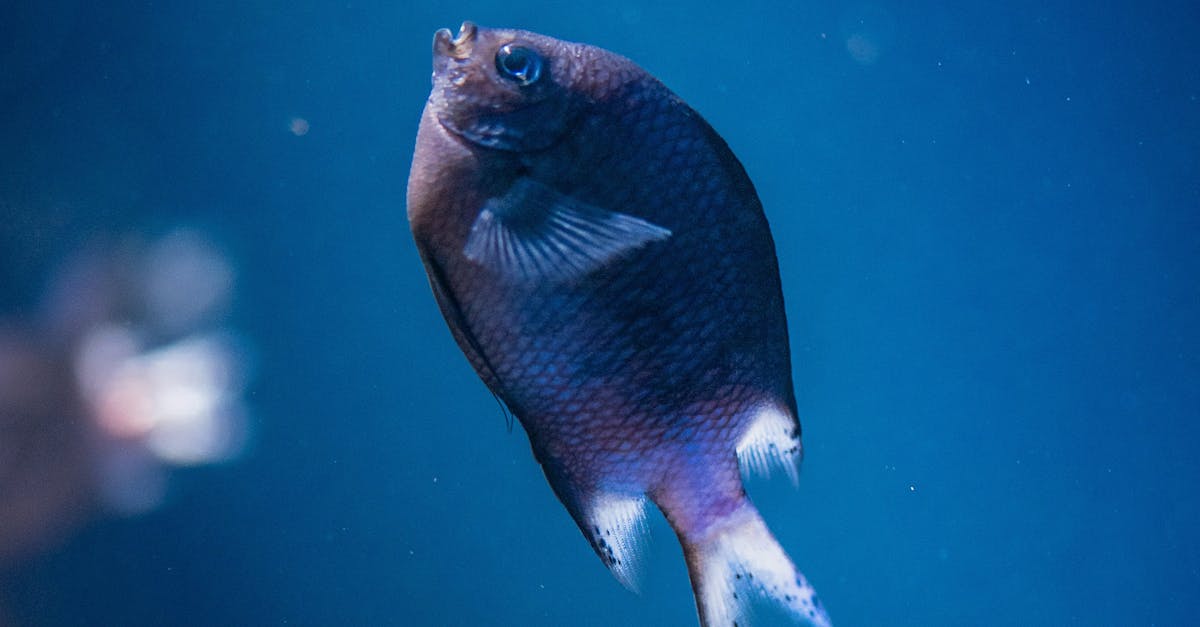Roundup of Low Histamine Fish Types

Cooking Methods That Preserve Low Histamine Fish
Certain cooking methods can help maintain the low histamine qualities of fish. Gentle techniques like poaching or steaming are preferred, as they involve lower temperatures and shorter cooking times. These methods prevent the breakdown of proteins that can lead to increased histamine formation. Baking at moderate temperatures can also be suitable if the fish is cooked quickly to avoid prolonged exposure to heat.
Chilling fish immediately after cooking is crucial for maintaining its freshness and minimising histamine development. Using ice baths or ensuring rapid cooling in the refrigerator can significantly reduce the risk of histamine accumulation. Additionally, preparation methods involving minimal additives or marinades can keep histamine levels in check, allowing the natural flavours of the fish to shine. Careful attention to these practices can enhance both safety and taste.
Techniques to Minimise Histamine Formation
Proper handling and storage of fish play crucial roles in minimising histamine formation. Keeping fish at low temperatures immediately after capture is vital, as warmth promotes the growth of bacteria that convert histidine to histamine. Maintaining fish at a steady temperature below 4°C can significantly reduce these risks. In addition, using ice or chilled storage during transport ensures that fish stays fresh and limits histamine production.
Cooking methods also influence histamine levels in fish. Quick-cooking techniques, such as steaming or poaching, help preserve the freshness and minimise the potential for histamine to develop. Avoid prolonged cooking processes, as they can lead to nutrient loss and may also create conditions conducive to histamine formation. Regularly checking for freshness and ensuring proper cooking practices contributes to a healthier dining experience.
Identifying Fresh Fish to Avoid Histamine Risks
Fresh fish is critical for minimising histamine risks, as histamine levels escalate rapidly in improperly stored seafood. When selecting fish, look for clear, bright eyes and shiny skin. The flesh should be firm and spring back when pressed. Any signs of browning or dullness indicate a lack of freshness, raising potential concerns regarding histamine formation.
Pay close attention to the smell of the fish. A fresh catch should have a clean, ocean-like scent. Any sour, overly fishy, or ammonia-like odours suggest that the fish has begun to spoil. Checking the gills is also essential; vibrant, red gills signify freshness, while brownish, discoloured gills suggest age. By observing these indicators, you can better ensure that your fish selection is low in histamine.
Tips for Selecting HighQuality Fish
Freshness plays a vital role in ensuring the quality of fish. Look for clear, bulging eyes which indicate that the fish is fresh. The skin should be bright and shiny, free from any dullness. If possible, check for a mild ocean scent; strong fishy odours are often a sign of degradation. Additionally, the flesh should be firm and spring back when touched, avoiding any signs of mushiness or discolouration.
Consider purchasing fish from reputable suppliers who prioritise sustainable practices. If available, opt for local fish markets where you can directly interact with sellers and ask about their sourcing methods. Inquire about the catch date; fish caught within the last 24 hours tend to be fresher and have lower histamine levels. Packaging can also reveal much; vacuum-sealed options often retain freshness longer than those displayed openly.
The Importance of Sourcing Sustainable Fish
Sourcing sustainable fish is crucial for maintaining healthy ocean ecosystems. Overfishing has resulted in depleted fish populations and disrupted marine habitats. Opting for sustainably caught fish helps protect these resources for future generations, ensuring that seafood remains accessible and ecologically balanced.
Furthermore, sustainable fishing practices reduce the impact on marine biodiversity. By choosing fish that come from responsibly managed fisheries, consumers support initiatives that promote healthy breeding practices and habitat conservation. This conscious choice can lead to a more stable fish population and help maintain the overall health of marine environments.
Ethical Considerations in Low Histamine Choices
Choosing low histamine fish often intersects with sustainability practices. Opting for fish sourced from well-managed populations helps preserve marine biodiversity. Many overfished species face declining numbers, impacting ecosystems and communities that rely on fishing for their livelihoods. Supporting sustainable fisheries ensures that these resources remain available for future generations while reducing the likelihood of consuming fish with higher histamine levels due to poor handling and storage practices.
Consumer awareness plays a significant role in ethical sourcing. Knowledge of fishing methods and adherence to sustainability standards is essential for making informed choices. Certification labels can guide shoppers towards responsible fisheries and aquaculture operations. By prioritising these standards, individuals can contribute to healthier oceans and more ethical supply chains, while also managing their histamine intake effectively.
FAQS
What are low histamine fish types?
Low histamine fish types are species of fish that are less likely to produce histamine when stored, handled, or cooked properly. Examples include fresh cod, haddock, sole, and trout.
How can I ensure the fish I buy is low in histamine?
To ensure the fish is low in histamine, look for fresh fish that has been properly stored, check for clear eyes and a mild sea smell, and avoid any fish that appears discoloured or has a strong odour.
What cooking methods are best for preserving low histamine fish?
Cooking methods such as steaming, poaching, and baking are recommended for preserving the low histamine content in fish, as they help minimise the risk of histamine formation.
Why is sourcing sustainable fish important for low histamine diets?
Sourcing sustainable fish is important as it supports healthier ocean ecosystems, promotes ethical fishing practices, and often results in fresher fish, which is less likely to have high histamine levels.
Are all types of fish safe for low histamine diets?
No, not all types of fish are safe for low histamine diets. Some fish, especially those that are aged, canned, or processed, are more likely to contain high levels of histamine and should be avoided.
Related Links
10 Best Low Histamine Canned Fish OptionsHow to Store Canned Fish for Low Histamine Diets